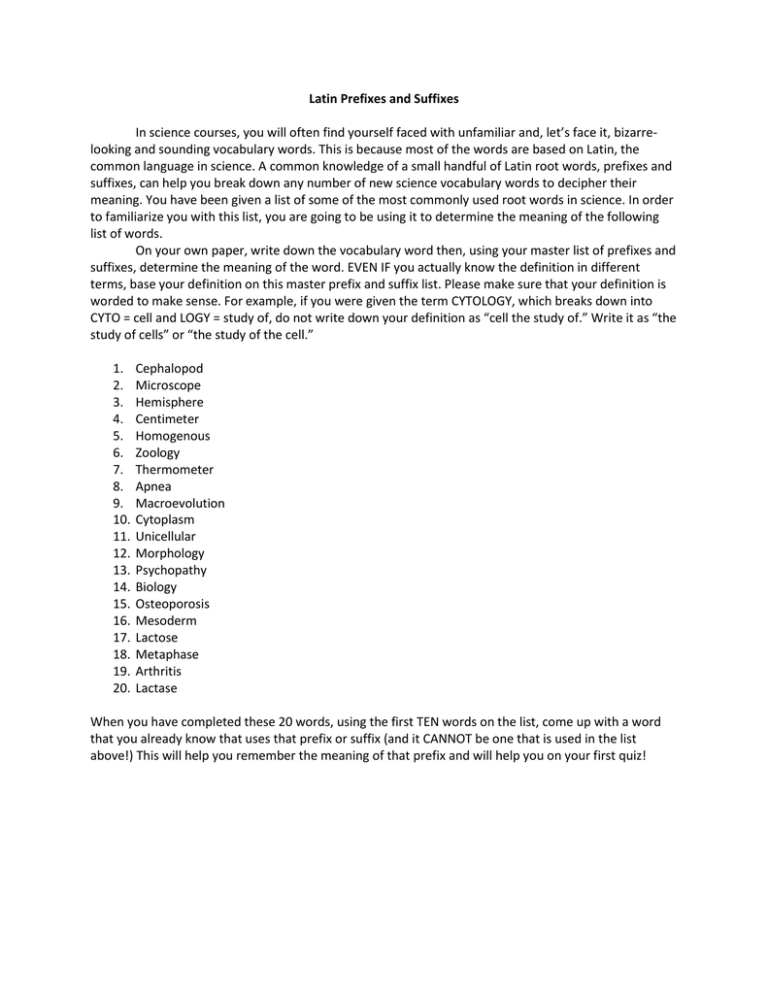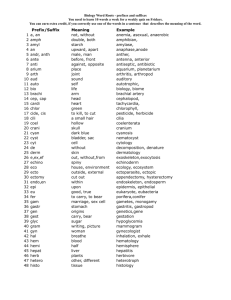Latin Prefixes & Suffixes in Science Worksheet
advertisement

Latin Prefixes and Suffixes In science courses, you will often find yourself faced with unfamiliar and, let’s face it, bizarrelooking and sounding vocabulary words. This is because most of the words are based on Latin, the common language in science. A common knowledge of a small handful of Latin root words, prefixes and suffixes, can help you break down any number of new science vocabulary words to decipher their meaning. You have been given a list of some of the most commonly used root words in science. In order to familiarize you with this list, you are going to be using it to determine the meaning of the following list of words. On your own paper, write down the vocabulary word then, using your master list of prefixes and suffixes, determine the meaning of the word. EVEN IF you actually know the definition in different terms, base your definition on this master prefix and suffix list. Please make sure that your definition is worded to make sense. For example, if you were given the term CYTOLOGY, which breaks down into CYTO = cell and LOGY = study of, do not write down your definition as “cell the study of.” Write it as “the study of cells” or “the study of the cell.” 1. 2. 3. 4. 5. 6. 7. 8. 9. 10. 11. 12. 13. 14. 15. 16. 17. 18. 19. 20. Cephalopod Microscope Hemisphere Centimeter Homogenous Zoology Thermometer Apnea Macroevolution Cytoplasm Unicellular Morphology Psychopathy Biology Osteoporosis Mesoderm Lactose Metaphase Arthritis Lactase When you have completed these 20 words, using the first TEN words on the list, come up with a word that you already know that uses that prefix or suffix (and it CANNOT be one that is used in the list above!) This will help you remember the meaning of that prefix and will help you on your first quiz!











